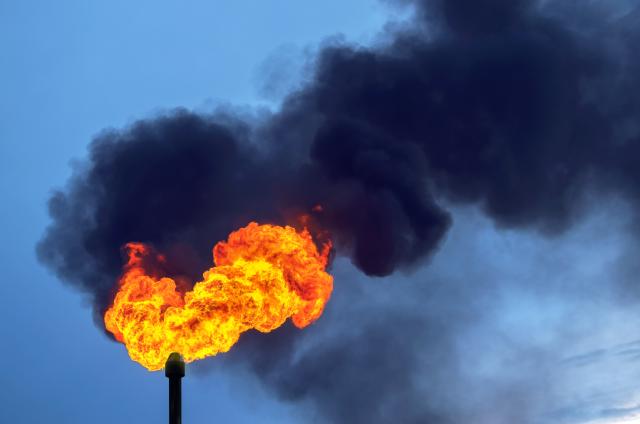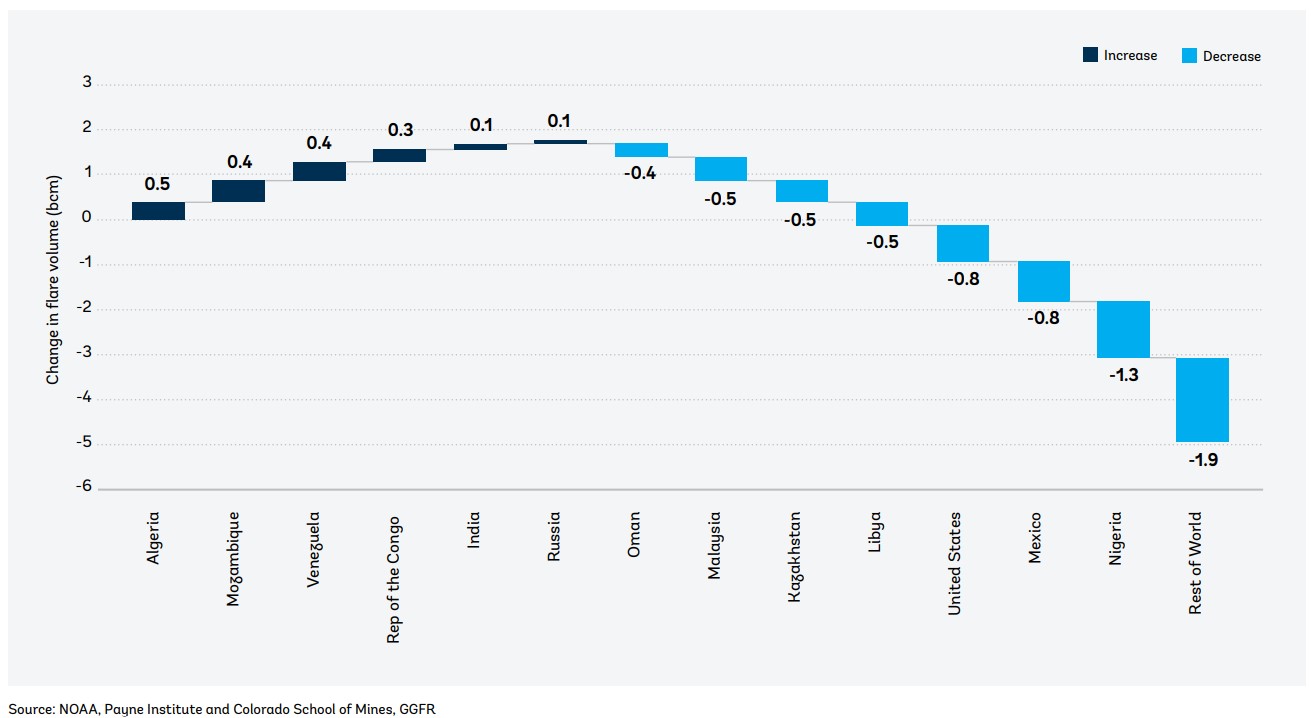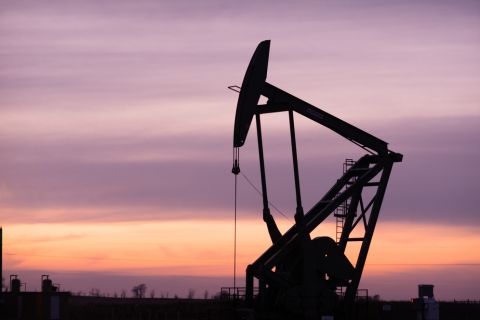
Black smoke from burning of associated gas. (Source: Shutterstock)
Last year, the U.S. reduced its flaring 9% and flaring intensity by 14% compared to the prior year, despite increasing oil production, according to a recent World Bank report.
The U.S. reduced flaring by 9% or 0.8 billion cubic meters (Bcm) in 2022 compared to 2021. U.S. producers also reduced its flaring intensity by 14% to 1.8 cubic meters of gas flared per barrel of oil produced (cm/bbl) in 2022 – the lowest value recorded in the past 10 years – compared to 2.1 cm/bbl in 2021, the World Bank said in its March 2023 edition of the Global Gas Flaring Tracker Report.
Flaring intensity is a measure of the amount of gas flared per barrel of oil produced.
The reductions in 2022 came despite a 6% increase in U.S. oil production, the report said.
“This suggests a continuation of the significant progress made by the U.S. to expand its integrated gas value chain and to commercialize more associated gas,” the report said.
“During 2022, there was also an increase in LNG export globally from the U.S. with a marked increase in the portion of those exports going to Europe from early 2022 onwards,” the report said. “The U.S. demonstrates the results that can be achieved when private companies (upstream, midstream and downstream) seek to capitalize on gas market opportunities and are supported by strong regulation on flaring.”

Global gas flaring volumes fall 3%
After a decade of little progress globally, gas flaring volumes fell 3% worldwide to 139 Bcm in 2022, according to satellite-based estimates. That compares with flaring of 144 Bcm in 2021, according to the World Bank’s report, which was produced jointly with the assistance of the Global Gas Flaring Reduction Partnership.
Three countries, Nigeria, Mexico and the U.S., accounted for most of the decline in global gas flaring in 2022.
“However, despite this welcome reduction, greater and sustained efforts are needed to end this wasteful and polluting practice,” the report said. “The growing sense of urgency in tackling global gas flaring is further fueled by an increased concern regarding the amount of methane emitted during flaring.”
The top nine flaring countries continued to be responsible for the vast majority of flaring – 74% worldwide – while producing 45% of global oil production.
The top gas flaring nations, in order, are Russia, Iraq, Iran, Algeria, Venezuela, the U.S., Mexico, Libya and Nigeria.
The World Bank said the reduction in global flaring volumes came about despite a 5% rise in oil production to 80 MMbbl/d in 2022 compared to 77 MMbbl/d in 2021.
“This decoupling of gas flaring and oil production is notable and led to a reduction in the global average flaring intensity, the amount of gas flared per barrel of oil produced, to 4.7 m3/bbl in 2022 compared to 5.1 m3/bbl in 2021,” the report said.
Recommended Reading
Hess Corp. Boosts Bakken Output, Drilling Ahead of Chevron Merger
2024-01-31 - Hess Corp. increased its drilling activity and output from the Bakken play of North Dakota during the fourth quarter, the E&P reported in its latest earnings.
The OGInterview: Petrie Partners a Big Deal Among Investment Banks
2024-02-01 - In this OGInterview, Hart Energy's Chris Mathews sat down with Petrie Partners—perhaps not the biggest or flashiest investment bank around, but after over two decades, the firm has been around the block more than most.
Petrie Partners: A Small Wonder
2024-02-01 - Petrie Partners may not be the biggest or flashiest investment bank on the block, but after over two decades, its executives have been around the block more than most.
From Restructuring to Reinvention, Weatherford Upbeat on Upcycle
2024-02-11 - Weatherford CEO Girish Saligram charts course for growth as the company looks to enter the third year of what appears to be a long upcycle.
JMR Services, A-Plus P&A to Merge Companies
2024-03-05 - The combined organization will operate under JMR Services and aims to become the largest pure-play plug and abandonment company in the nation.






